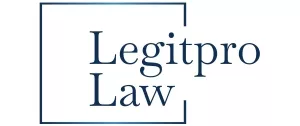- within Immigration topic(s)
- with Finance and Tax Executives
- in European Union
- in European Union
- in European Union
- in European Union
- with readers working within the Retail & Leisure and Law Firm industries
On September 19, 2025, an executive order was signed, imposing a $100,000 fee on new H-1B visa applications and limiting entry for specific non-immigrant workers1. Effective as of September 21, 2025, and initially set for a one-year duration with the option for renewal, this policy aims to address what is perceived as overuse of the program, with a focus on prioritising the domestic labour market. Clarifications from authoritative sources confirm that the fee is a one-off charge applicable solely to new applications, thereby exempting renewals and current holders, which alleviates some immediate apprehensions. For India, a significant participant in the H-1B program with recipients accounting for over 70% of recent approvals, this represents a pivotal moment. The directive has ignited extensive discussions, including potential short-term disruptions such as travel complications during holiday seasons, while simultaneously creating opportunities for long-term domestic expansion. This article explores the legal foundations, economic adjustments, prospects for innovation, and market changes, offering a guide for strategic adaptation in this dynamic landscape.
Legal Framework and Compliance Strategies
The executive order utilises presidential authority granted by the Immigration and Nationality Act to govern non-immigrant entries for the sake of economic security. It enforces a $100,000 fee on new H-1B applications2, allowing for exemptions for positions considered to be in the national interest, such as those in critical technology or healthcare fields. Recent clarifications highlight that the fee will not be applied retroactively, enabling current visa holders to return without incurring additional expenses, thereby maintaining operational stability. Nonetheless, the structure of the policy raises legal concerns regarding its proportionality and the potential for conflicts with international trade commitments, particularly those under the World Trade Organisation's agreements on services.
Anticipated challenges include judicial reviews, as industry associations are likely to contend that the fee creates an excessive burden, which could infringe upon administrative rules or equal protection principles. Previous restrictions have encountered court injunctions, providing precedents for temporary suspensions. In the interim, proactive strategies involve reviewing visa portfolios to pinpoint eligible exemptions and considering alternatives such as L-1 visas for intracompany transfers or O-1 visas for individuals with extraordinary abilities, although these options require comprehensive documentation. For example, Carnegie Mellon University has advised H-1B holders currently outside the U.S. to return by September 20 to prevent complications, underscoring the urgency of such approaches3.
On the global stage, the order may lead to diplomatic discussions, especially given the existing economic relationships between countries. Organisations should prepare by participating in lobbying initiatives and investigating varied global mobility options, such as setting up operations in areas with more favourable visa conditions like Canada or the EU. This strategy not only ensures adherence to regulations but also fosters resilience against future policy changes, potentially through collaborative ventures that capitalise on exemptions for roles deemed to be in the national interest.
Economic Realignments and Talent Dynamics
The policy is anticipated to accelerate the reduction of skilled migration outflows, steering professionals in sectors such as technology, engineering, and healthcare back toward domestic job opportunities. Given that the fee will make new sponsorships more expensive, industries that depend on H-1B visas where new entrant approvals represent roughly 17% of the total might experience an impact of 11- 99 basis points on earnings before interest and taxes (EBIT), which could equate to a 0.5-6% effect on earnings per share (EPS) in the most adverse situations. Nevertheless, factors such as increased offshoring, automation, and localisation can mitigate these effects, with forecasts indicating minimal short-term disruptions and the potential for improved margins from higher offshoring ratios4.
Remittances, which amounted to around $100 billion in 2023 with a notable share from the U.S., are expected to decrease as migration slows down. This might initially put pressure on household economies but could also foster a shift toward local business ventures. For example, analytical reports reveal scenarios in which companies either absorb the fee or shift to local hiring, resulting in 25-30% higher expenses but potentially negotiable with clients. Such adjustments could lead to EBIT margin reductions of 20-50 basis points or EPS impacts of 2-5%, yet without significant revenue changes if offshoring increases. A practical illustration is the tech industry's reaction: 5Amazon, which received over 12,000 H-1B approvals in early 2025, may expedite the expansion of its India-based global capability centres (GCCs), which already employ tens of thousands, to ensure service delivery without relying on visas.
In metropolitan regions, the retention of talent may elevate demands for enhanced infrastructure, promoting urban development projects. This demographic stability could strengthen collaborative networks, akin to the expansion of global capability centres (GCCs) in locations like Bengaluru, which now accommodates over 1,500 such facilities that contribute to economic multipliers. Initial indications from the implementation of the order include NASSCOM's recommendation to its members to hasten employee returns, reflecting a proactive approach toward domestic talent pooling6.
Innovation and Investment Opportunities
This transition offers a significant chance to reallocate considerable cash reserves totalling over $50 billion across essential sectors toward innovation instead of conventional models. By decreasing reliance on visa-reliant assignments, resources can be channelled into research and development in fields such as artificial intelligence, cloud computing, and engineering services. Analytical insights indicate a shift toward higher-value pursuits, with the possibility of 7-12% of business renegotiations occurring over 3-5 years, although this may be counterbalanced by automation and offshore scaling.
Start-up ecosystems are poised to benefit from improved team quality, as retained professionals form ventures in rapidly growing sectors like fintech and sustainability. With India's unicorn count exceeding 100, this growth could be further enhanced through government initiatives, resulting in more concentrated innovation clusters. For instance, the policy may expedite GCC formations, enhancing domestic employment and value chains, akin to how Infosys significantly increased its R&D spending following the 2017 visa restrictions, filing over 1,000 patents annually by 2024. Karnataka's home minister has already positioned the order as beneficial, potentially deterring U.S. migration and strengthening local tech recruitment.
Consumer markets in major cities are expected to become more dynamic, driven by increasing incomes from a localised workforce. Estimates predict the consumer economy will grow to $6 trillion by 2030, with digital sectors experiencing significant growth. This climate encourages targeted investments in e-commerce and premium services, capitalising on heightened urban demand. Current examples include early excitement on platforms like X, where conversations suggest a possible "brain gain" for Bengaluru, with users forecasting a transition of innovation centres from Silicon Valley to Indian metropolitan areas.
Market dynamics in Real Estate and Education
Real estate in prominent metropolitan areas may experience price increases due to a surge in demand from relocating professionals. Recent data indicates annual growth rates of 10-15% in regions such as Mumbai, which could accelerate further with the influx of skilled workers. There are significant opportunities in creating sustainable developments, like tech-enhanced commercial properties, to take advantage of this trend. For example, Hyderabad's HITEC City recorded a 12% increase in prices in 2025 alone, fuelled by expansions from the Gulf Cooperation Council, a pattern that is likely to amplify as returning residents seek closeness to innovation hubs.
In the education sector, top-tier institutions may encounter quicker tuition hikes in response to the rising demand for skill-based programs. As the appeal of migration diminishes, the focus is shifting toward curricula centred on AI and entrepreneurship, potentially through international partnerships. Reforms that facilitate foreign campuses could expand access and improve workforce preparedness. A notable illustration is the recent collaborations between IITs and U.S. companies such as Google for AI courses, which experienced enrolment increases of 25% in 2025, indicating a shift towards domestic skill enhancement.
Embracing a Resilient Future
While the H-1B executive order presents initial obstacles, including potential EPS effects of 2-6% annually over a three-year span, it ultimately positions India for sustainable growth through offshoring, automation, and talent retention. By adopting strategies such as contract renegotiations and localization, industries can offset costs over time, transforming policy challenges into strategic benefits. In the long run, this cultivates a resilient ecosystem, boosting innovation and economic richness. Flexible planning, from legal compliance to investment redirection, will be essential for seizing these opportunities, particularly as early clarifications bring stability to the environment.
Footnotes
1. The White House. (2025, September 19). Restriction on entry of certain nonimmigrant workers.
2. HT News Desk. (2025, September 21). H-1B visa fees news highlights: Deadline ends, $100,000 fee now effective amid concerns | World News. Hindustan Times.
3. Carnegie Mellon University. (n.d.). Executive Order related to H-1B Nonimmigrants issued - Office of International Education - Division of Enrollment Management - Carnegie Mellon University.
4. Ibid.
5. Biswas, S. D. (2025, September 19). Amazon, Microsoft among companies sponsoring more H-1B visas than before: Report | Hindustan Times. Hindustan Times.
6. The Hindu Bureau & The Hindu Bureau. (2025, September 22). U.S. clarification on H-1B calms nerves in tech circles but some warn of deferred impact. The Hindu.
The content of this article is intended to provide a general guide to the subject matter. Specialist advice should be sought about your specific circumstances.


